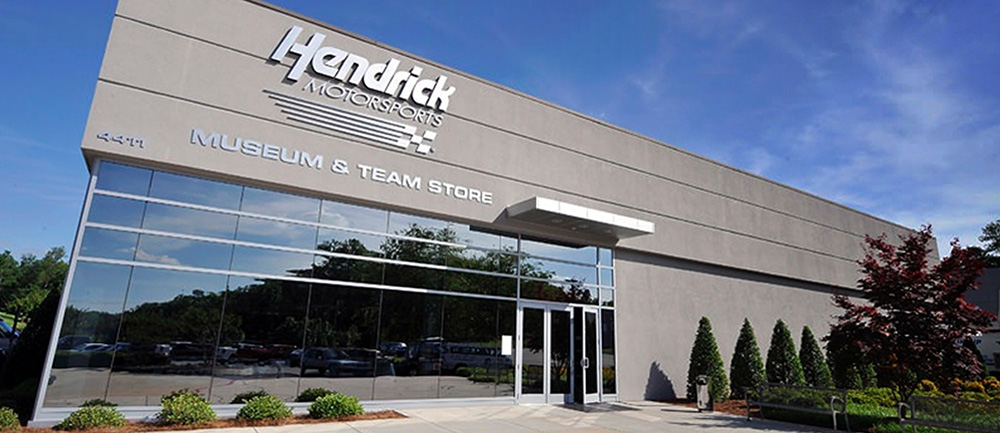
CONCORD, N.C. – At Hendrick Motorsports, science, technology, engineering and math are crucial to success on and off the track.
With that in mind, the organization started the Ignition 2 STEM initiative to focus on explaining how those four education disciplines are utilized in various Hendrick Motorsports careers.
This week marks National Engineers Week, and the purpose is to call attention to the contributions that engineers make to society.
So it seemed like a perfect time to introduce the race engineers for all four Hendrick Motorsports teams.
Up first, Taylor Moyer (pictured above) and Michael Oxendine (pictured below) of the No. 5 team.
TAYLOR MOYER
Race engineer for the No. 5 team
Where are you from and how did you begin at Hendrick Motorsports?
I am from Shoreham, Vermont. I landed the job by working in the motorsports field while in college. I got my foot in the door at Hendrick Motorsports by changing tires on a developmental pit crew. That resulted in getting a part-time job in the parts department. I was then selected for an engineering internship and was hired full time as an engineer upon graduating college.
Where did you go to school?
I went to Middlebury Union High and Patricia A. Hannaford Career Center, taking part in two years of what is now their STEM program, which was called Engineering/Architecture when I attended. I then attended the University of North Carolina at Charlotte and majored in Mechanical Engineering.
How would you describe your job?
My shop tasks are unique to that of a race engineer in that I am heavily involved in the fabrication of the cars – bodies, specifically. I also oversee the record-keeping of the car for when we get it ready for race day, which helps the head race engineer and crew chief make better decisions on changes to the car.
How does your job translate to success on the track?
My task of helping with the bodies translates directly to speed in maximizing the aerodynamic capabilities of the car at the track.
How do you use STEM in your career?
I use math for all types of car calculations, be it fuel mileage during the race or adjusting the bias weight in the car during practice. I use Science, Technology, Engineering and Math when I am back in the shop trying to improve the car's performance. You have to understand the science and theory behind what will bring the car speed. Then apply technology, engineering and math to that science to design new parts.
What was your most important (or favorite) subject in school?
I was blessed to be able to take two full years of engineering and architecture at Patricia A. Hannaford Career Center while in my junior and senior years of high school. That was my most important and favorite subject in school. It put me leaps and bounds ahead of others entering college as an aspiring engineer. It taught me how to translate ideas and theories into usable information. I could dream up a new part for my truck or snowmobile, then design that dream in CAD, make a print, and have it machined.
Do you have any advice for kids who might want to get into racing to follow in your footsteps?
Work hard. Nothing in my mind is more important than hard work. It is the single most controllable trait you can have. It is usually a determining factor in getting a job. Also, get as much experience in the field as you can. Volunteer to help people on their race cars. The best resumes have education backed up with real-world experience.
What was your first job that relates to your current position?
My first job involving a race car was working on my childhood friend's 600cc Mini Sprint Car. He drove and I helped as a mechanic/fabricator. We had the times of our lives.

MICHAEL OXENDINE
Race engineer and front-tire carrier for the No. 5 team
Where are you from and how did you begin at Hendrick Motorsports?
I am from Lumberton, North Carolina, and I got my start by working in the carbon fiber department and getting my college education.
Where did you go to school?
I went to school at UNCC and I majored in Mechanical Engineering, Physics, and minored in Mathematics.
How would you describe your job?
During the race, I go over the wall as part of the pit crew to change the tires and put fuel in the car. On the engineering side, I provide the crew chief and lead race engineer with information to help them make more informed decisions.
How does your job translate to success on the track?
Some of the information I provide helps the crew chief bring the car onto pit road at the correct time, improve the car's vehicle dynamic performance and change parts of the car to help the performance.
How do you use STEM in your career?
I use the information I learned in school every day, from writing code to looking at graphs to understand what they mean and using math to figure out daily projects.
What was your most important (or favorite) subject in school?
Computer Aided Design (CAD).
Do you have any advice for kids who might want to get into racing to follow in your footsteps?
Make sure you get a good education, and a very good understanding of basic mechanics.
What was your first job that relates to your current position?
I went to Hickory Motor Speedway and volunteered on a late model in 2005.







